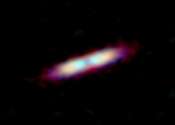Do the TRAPPIST-1 planets have atmospheres?
In February of 2017, the scientific community rejoiced as NASA announced that a nearby star (TRAPPIST-1) had a system of no less than seven rocky planets. Since that time, astronomers have conducted all kinds of follow-up ...









